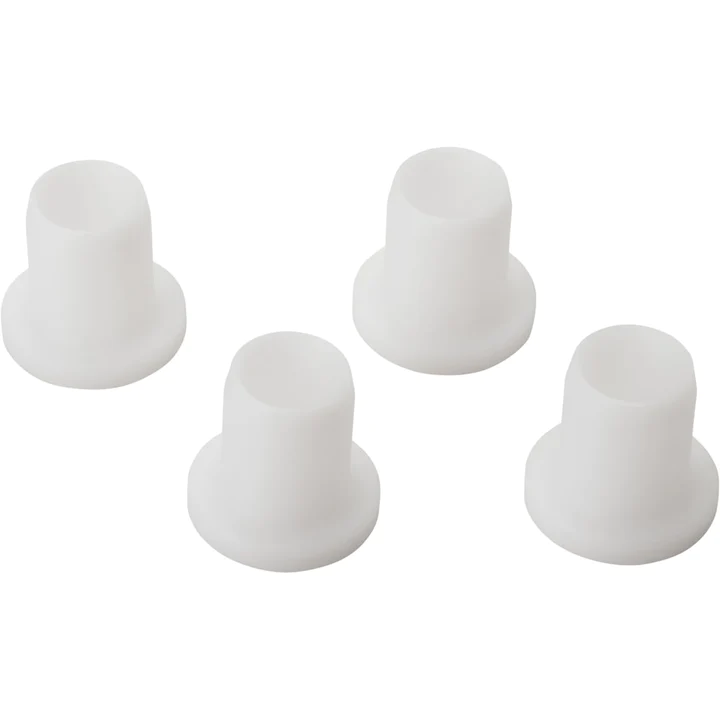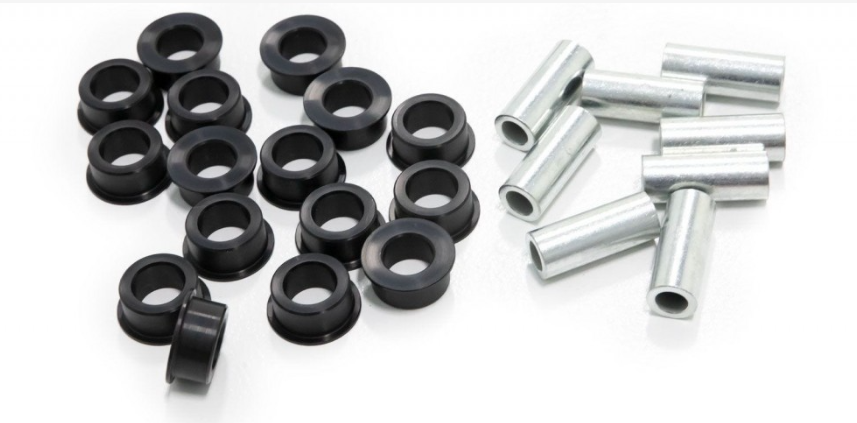
Can UHMW bushings be used in applications with tight tolerances and precision requirements?
Yes, UHMW (Ultra-High Molecular Weight Polyethylene) bushings can be used in applications with tight tolerances and precision requirements. Here’s a detailed explanation:
While UHMW is known for its excellent wear resistance and other beneficial properties, it’s important to consider certain factors when using UHMW bushings in applications with tight tolerances and precision requirements:
1. Machining and Tight Tolerances:
UHMW material can be machined to achieve tight tolerances and precise dimensions. However, it’s important to note that UHMW has a relatively high coefficient of thermal expansion compared to metals. This means that the dimensions of UHMW bushings can be affected by temperature changes. Proper consideration and compensation for thermal expansion are necessary when designing and machining UHMW bushings for applications with tight tolerances.
2. Dimensional Stability:
UHMW exhibits good dimensional stability under normal operating conditions. It has a low moisture absorption rate, which helps to maintain its shape and dimensions over time. This dimensional stability is important for maintaining the tight tolerances required in precision applications.
3. Low Friction and Low Stick-Slip:
UHMW bushings have a low coefficient of friction and low stick-slip characteristics. Stick-slip refers to the jerky or erratic motion that can occur when there is a difference between static and dynamic friction. The low friction and low stick-slip properties of UHMW bushings contribute to smooth and precise movement, making them suitable for applications with precision requirements.
4. Load-Bearing Capability:
UHMW bushings have good load-bearing capabilities, particularly in applications with moderate to low loads. However, it’s important to consider the specific load requirements and consult the manufacturer’s guidelines to ensure that the selected UHMW bushings can handle the intended loads within the required tolerances.
5. Compatibility with Mating Surfaces:
UHMW bushings are compatible with a variety of mating surfaces, including metals, plastics, and composites. This versatility allows for compatibility with different components and mating materials, contributing to the precision and performance of the overall system.
When utilizing UHMW bushings in applications with tight tolerances and precision requirements, it’s crucial to carefully evaluate the specific requirements of the application, consider thermal expansion effects, ensure proper machining and installation techniques, and consult with manufacturers or engineering experts when necessary. By taking these factors into account, UHMW bushings can provide reliable performance and meet the precision demands of the application.

How do I choose the right size and configuration of UHMW bushings for my application?
Choosing the right size and configuration of UHMW (Ultra-High Molecular Weight Polyethylene) bushings for your application involves considering several factors. Here’s a detailed explanation:
1. Load Requirements:
Determine the load requirements of your application, including the magnitude and distribution of the load. This information is crucial in selecting UHMW bushings that can handle the specific load demands effectively.
2. Shaft Diameter and Tolerance:
Measure the diameter of the shaft or pivot where the UHMW bushing will be installed. Ensure that you have accurate measurements and consider the tolerance requirements to ensure a proper fit between the bushing and the shaft.
3. Bushing Length:
Determine the required length of the UHMW bushing based on the specific application and installation requirements. Consider factors such as the available space, axial movement requirements, and any additional components or features that need to be accommodated.
4. Clearance and Interference:
Consider the desired clearance or interference fit between the UHMW bushing and the housing or surrounding components. The fit type should be selected based on the specific application requirements, taking into account factors such as the desired level of clearance, the need for self-alignment, and the prevention of excessive play or binding.
5. Lubrication Requirements:
Determine the lubrication requirements of your application. UHMW bushings have inherent self-lubricating properties, but in certain cases, additional lubrication may be necessary. Consider the compatibility of the lubricant with UHMW and the operational conditions to ensure optimal performance and longevity.
6. Environmental Factors:
Take into account the environmental conditions in which the UHMW bushings will operate. Consider factors such as temperature extremes, exposure to chemicals or corrosive substances, moisture levels, UV radiation, and other environmental factors that could impact the performance and durability of the bushings.
7. Application Specifics:
Consider any specific requirements or constraints of your application. This could include factors such as speed, precision, noise reduction, vibration dampening, or any other unique considerations that may influence the selection of UHMW bushings.
8. Manufacturer or Supplier Guidance:
Consult with the manufacturer or supplier of UHMW bushings for guidance. They can provide valuable expertise and assistance in selecting the appropriate size and configuration of UHMW bushings based on your specific application requirements. They may also offer technical resources, engineering support, or customized solutions to meet your needs.
In summary, choosing the right size and configuration of UHMW bushings involves considering factors such as load requirements, shaft diameter and tolerance, bushing length, clearance and interference, lubrication requirements, environmental factors, application specifics, and seeking guidance from the manufacturer or supplier. By carefully evaluating these factors and consulting with experts, you can ensure the optimal selection and performance of UHMW bushings for your application.

What is UHMW, and how is it used in the manufacturing of bushings?
UHMW (Ultra-High Molecular Weight Polyethylene) is a type of thermoplastic polymer known for its exceptional strength, durability, and low friction properties. It is commonly used in the manufacturing of bushings due to its unique characteristics. Here’s a detailed explanation:
Properties of UHMW:
UHMW possesses several key properties that make it suitable for bushing manufacturing:
- High Molecular Weight: UHMW has an extremely high molecular weight, which contributes to its excellent strength and toughness. It allows UHMW to withstand high loads and impact forces without deformation or failure.
- Low Friction: UHMW has a very low coefficient of friction, which means it exhibits minimal resistance to sliding or rubbing against other surfaces. This low friction property reduces wear and frictional heat generation, making it an ideal material for bushings.
- Self-Lubricating: UHMW has inherent self-lubricating properties, meaning it requires minimal external lubrication to reduce friction. Its molecular structure allows for the formation of a lubricating film on the surface, reducing the need for additional lubrication.
- Chemical Resistance: UHMW is highly resistant to many chemicals, acids, solvents, and other corrosive substances. This chemical resistance helps protect the bushings from degradation and ensures their long-term performance in various environments.
- Abrasion Resistance: UHMW exhibits excellent abrasion resistance, enabling it to withstand wear caused by repetitive sliding or rubbing motions. This property is critical for bushings that experience frequent motion and contact with other components.
- Low Water Absorption: UHMW has low water absorption properties, which means it does not absorb moisture easily. This characteristic helps prevent swelling, distortion, or dimensional changes in the bushings when exposed to moisture or humidity.
Manufacturing of Bushings:
UHMW is used in the manufacturing of bushings through various processes such as injection molding, compression molding, or machining. The specific manufacturing method depends on the desired shape, size, and application requirements of the bushings.
During the manufacturing process, UHMW can be formed into bushings with precise dimensions and tolerances. The material’s high strength allows it to withstand the loads and forces experienced by bushings, while its low friction properties contribute to smooth operation and reduced wear.
UHMW bushings find applications in a wide range of industries, including automotive, machinery, food processing, material handling, and more. They are commonly used in applications where low friction, high wear resistance, chemical resistance, and dimensional stability are essential.
Overall, UHMW is a versatile material that offers exceptional properties for bushing manufacturing, making it a popular choice for various industries and applications.


editor by CX 2024-02-08